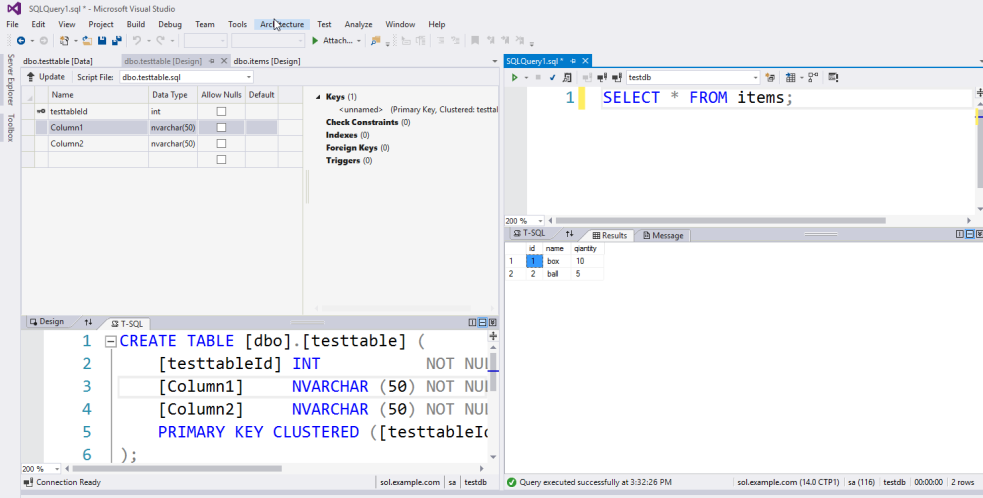Red Hat Sql Compare
New HTML reports SQL Graph support SQL Server 2017 Feature In SQL Compare 13 we have added support for SQL Graph. Audiotorrent. This new feature in SQL Server 2017 adds graph database capabilities for modeling many-to-many relationships.
Redgate provides Compliant Database DevOps solutions for the finance, healthcare, and technology sectors, plus ingeniously simple tools for SQL Server,.NET, and Oracle. Download lagu dj remix. It is well documented that there are a number of key benefits to deploying a Virtual Desktop Infrastructure but there can also be many potential pitfalls whe. SQL Server 2019 is now available on Red Hat Enterprise Linux as a Red Hat Certified Container Images and Ubuntu-based container images enabling you to take advantage of the latest SQL Server engine innovations such as new SQL Graph features, and Data Discovery and Classification.
Red Hat provides storage, operating system platforms, middleware, applications, management products, and support, training, and consulting services. Talend is an open source software vendor that provides data integration, data management, enterprise application integration and big data software and services.
This is used extensively by social media platforms such as Facebook and LinkedIn, and other businesses are now looking at how they too can explore them to reveal valuable information about the relationships between customers. SQL Compare fully supports SQL Graph, and allows you to compare and deploy databases which include both graph and relational tables. Improved temporal tables support SQL Server 2017 Feature In SQL Compare has supported temporal tables for a while, but in SQL Compare 13 we have improved this support in line with the new feature introduced in SQL Server 2017.
The new functionality includes temporal table history retention policies. SQL Compare now supports customisation on history tables for temporal tables, such as customised indexes. Azure Active Directory authentication SQL Compare now supports Azure Active Directory authentication with integrated and password authentication methods.

These options are available in the 'Authentication' dropdown in the 'Database' section of the 'Edit project' window. Note that this feature requires.NET 4.6 and adalsql.dll to be installed,. Saved login details With SQL Compare 13 you now have the option to securely save your login details for databases and servers so they don't need to be re-entered each time. SQL Monitor support If you use you can now connect SQL Compare so that deployments are automatically detected and displayed within your dashboard. Please note: This feature will require a license. Improved Summary view of detailed differences In SQL Compare 12 we added a brand new way to examine the differences between two objects in your database.
In SQL Compare 13 we are continuing to develop this new feature to make your differences even easier to read. We have added an alternative way of viewing the differences between objects in a database.
Red Hat Sql Compared
The new summary view provides a more concise view of the differences between two objects by getting rid of the SQL and showing only the semantic differences between objects in a much more structured way. Improved ordering of columns in the SQL difference viewer In addition to the new summary view, we have also made it easier to see why two tables are different when looking at the SQL difference viewer, so that it always displays the columns in an order that makes it clear exactly what the differences are. Red/green highlighting in the SQL difference viewer We have also made changes to the colors used to show differences between the left and right hand sides, so that differences in the source database are shown in green and differences in the target database are shown in red. By moving to this color scheme, commonly used in other diff viewer tools, we have increased visual contrast, making it easier to see at a glance where the differences between the source and target are. The change to the color scheme also makes it clearer that the changes to the source database, in green, will be added, or applied, to the target and those changes to the target database, in red, will be removed, or overwritten. This is in keeping with how most other diff viewer tools use red and green.